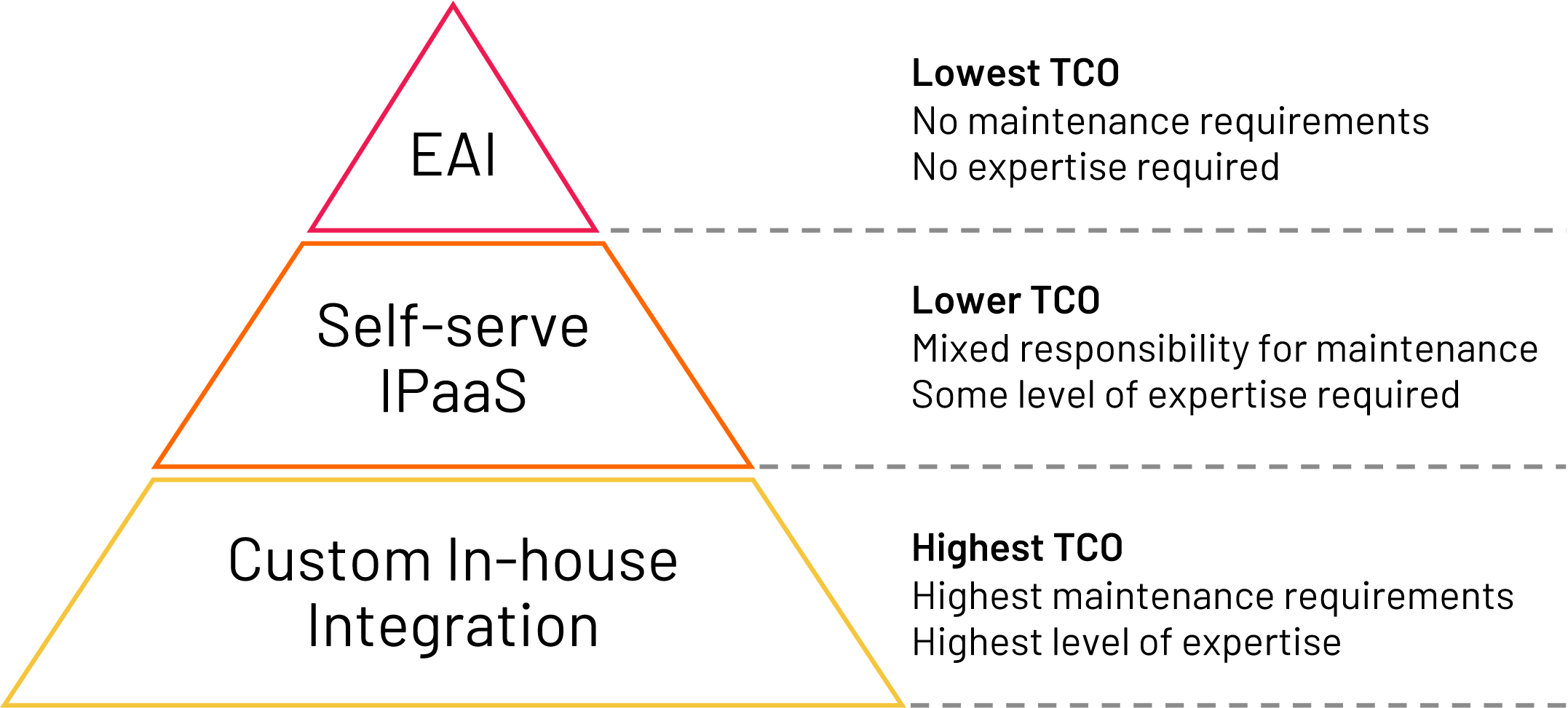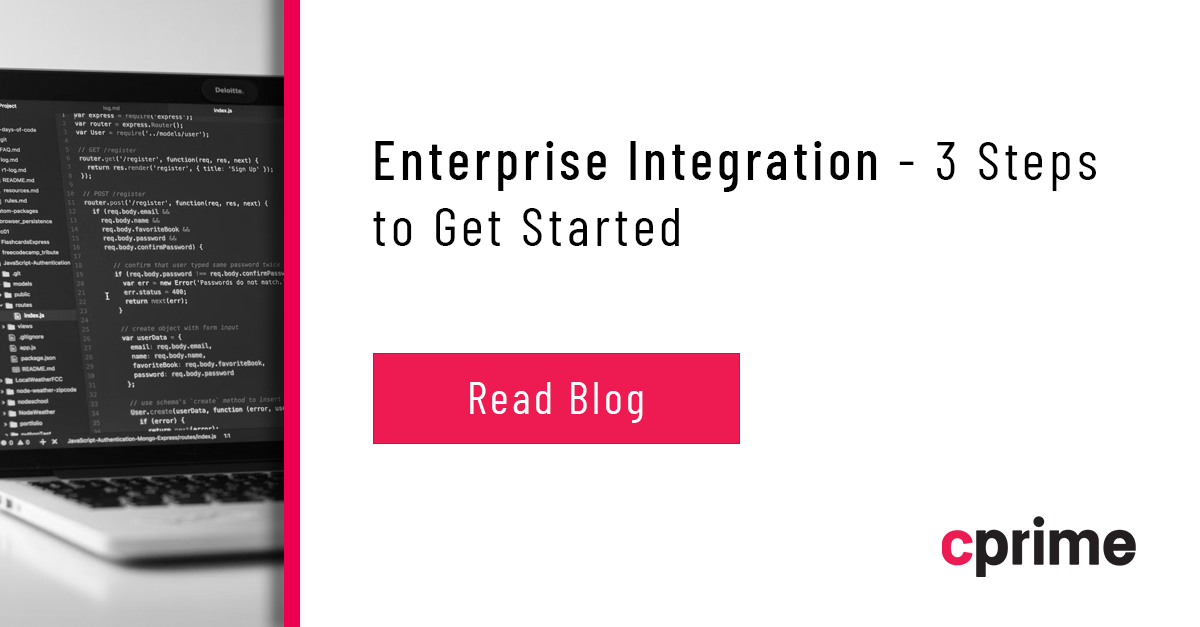What is Enterprise Application Integration (EAI)?
These days, every business runs on multiple apps and platforms. There’s no such thing as “one solution to rule them all.” As a result, integrations between various platforms and services have become a vital part of the business infrastructure for these organizations.
There are many products and services available to help companies develop these integrations. So this brings us to the concept of Enterprise Application Integration (EAI). What is EAI? How is it different from Integration Platform as a Service (IPaaS)? Why might you consider an EAI solution? And, is it worth your time and investment?
We’ll explore the answers to all these questions below.
What is Enterprise Application Integration?
Enterprise Application Integration — often abbreviated as EAI — has a broad definition. But, for our purposes, we’ll define it as a set of processes used to create, manage, and maintain integrations between two or more business applications via Cloud connections, based on application programming interfaces (APIs). It may or may not take advantage of an existing integration or automation platform. It also may or may not include custom-developed integrations.
What is the difference between EAI and IPaaS?
It’s easy to mix up EAI and IPaaS (Integration Platform as a Service) because an EAI process will often involve using an IPaaS solution.
Put simply, an IPaaS solution is one of the many tools that an EAI provider will use to produce the integrations a business needs. So, using an IPaaS reduces or eliminates the need for custom development of an integration. For example, Cprime is an EAI provider. Our Solutions Engineers use popular IPaaS options like Workato or Zapier to facilitate many of the integrations they create.
Some IPaaS providers develop partnerships with various applications and create code snippets utilizing those applications’ APIs so that one can talk to the other effectively. Others provide an open API or a developer’s toolset so anyone can build connections within their ecosystem. The EAI provider handles the work involved in creating, managing, and maintaining those integrations in line with a customer’s business needs.
It’s important to note that many IPaaS solutions — Workato included — are set up to offer “self-service” options. And some companies have chosen to keep their integration development solely in-house. So, that begs the question, why consider working with an EAI provider?
What are the benefits of EAI?

- Do you have the in-house expertise to effectively create and maintain your integrations?
- What level of ongoing maintenance will each integration require going forward?
- What is the Total Cost of Ownership (TCO) for your integration needs?
Integrations expertise
To develop your own custom integrations, you will need to have in-house resources who can:
- Dedicate the time and effort necessary to identify business needs
- Develop the appropriate integrations
- Routinely update and maintain them as applications evolve and needs change
Considering all the costs associated with full-time employees and the amount of time this could require, this can add up to a substantial price.
By utilizing an IPaaS solution directly, the need for an in-house expert drops somewhat because some prepackaged integrations may exist. However, you will still need to choose and implement the best integrations for your business needs. And, without an expert on staff, you will be limited to what’s available out-of-the-box.
Working with an EAI provider, you do not need in-house integrations expertise. The provider can handle everything for you.
Ongoing maintenance
Maintaining just one integration can be time-consuming, and it requires vigilance to always stay on top of software updates and changing business needs. If you’re looking for integration and automation at scale, it can become a logistical nightmare and a costly burden.
An IPaaS solution can alleviate some maintenance headaches because they will continually maintain and update their connectors as the various integrated applications evolve. However, it will still be your responsibility to stay on top of how well the integration meets your needs and make any necessary changes to your portfolio of integrations.
An EAI provider can take on full responsibility for maintaining your integrations. All they require is to be notified of changes in your business needs so they can make the necessary adjustments.
Total cost of ownership

Working directly with an IPaaS will reduce the TCO because they will cover the upfront development costs (assuming you can use prebuilt integrations) and most maintenance costs. This needs to be balanced against the licensing costs, but there is generally no comparison to in-house development.
Working with an EAI often results in the lowest TCO, especially for those organizations that need some level of customization and are looking to establish a scaled integration infrastructure.
Is Enterprise Application Integration worth your time and investment?
Based on the above, many companies have decided that working with a provider offering Enterprise Application Integration makes the most sense. We’ve worked hard to develop a comprehensive EAI solution in partnership with Workato that we’d love to discuss with you if you’d like to learn more.



